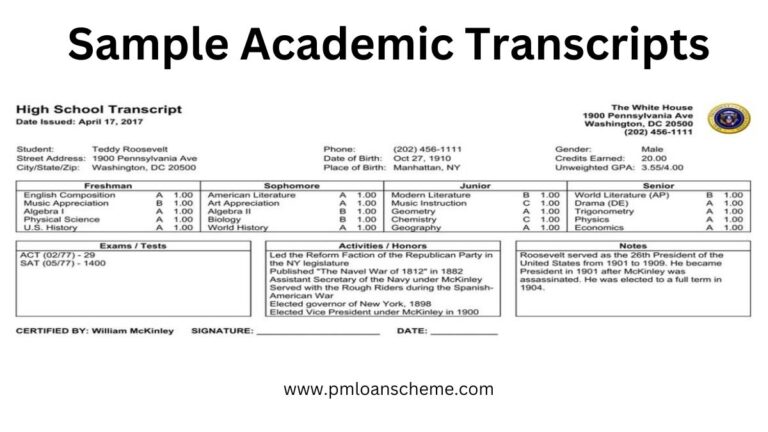How to convert SGPA to Percentage? Semester Grade Point Average and Cumulative Grade Point Average (CGPA). It covers how each metric is calculated and their significance in evaluating academic performance throughout a student’s educational journey.
What is SGPA?
SGPA, or Semester Grade Point Average, is a metric commonly used by universities and colleges to evaluate a student’s performance for a particular semester. This grading system simplifies understanding of a student’s academic standing without focusing solely on raw scores. SGPA is calculated based on grade points assigned to subjects, making it easy to get an overview of one’s performance across subjects in a particular semester.

Each subject carries a certain credit value, and the SGPA is calculated by taking a weighted average of these grade points, accounting for the subject credits. For instance, if a high-credit course has a high grade, it impacts the SGPA more significantly than a low-credit course.
SGPA to Percentage Conversion: Common Methods
Unlike percentages, which directly indicate the proportion of marks scored out of the total, SGPA requires conversion to a percentage. However, no universal formula applies across all institutions. Here are some of the widely used methods:
- Formula Method: Many institutions use the basic sgpa to percentage formula:
- Here, X varies across universities and might be values like 5, 7.5, or 10, depending on institutional grading policies.
- Direct Multiplier Method: Some institutions use a straightforward conversion formula:
- Custom Conversion Chart: Universities sometimes publish specific conversion tables mapping SGPA to percentages for each SGPA level, especially when grading policies are unique or non-linear.
The specific formula used for your conversion should be verified with your institution to ensure accuracy.
Steps for Calculating SGPA and Converting to Percentage
Step 1: Calculate Grade Points for Each Subject
Each grade (A, B, C, etc.) corresponds to a certain grade point, typically on a 10-point scale (like A = 10, B = 8, etc.). Multiply the grade point for each subject by the subject’s credit.
Step 2: Find Total Grade Points and Credits
Add up the weighted grade points for all subjects in the semester to get a cumulative score. Also, sum up all the credits for that semester.
Step 3: Calculate SGPA
Use the formula:
Step 4: Convert SGPA to Percentage
Finally, apply your institution’s conversion formula (such as multiplying SGPA by 10 or another specified factor) to obtain the percentage.
Common Conversion Scales in Major Universities
Some institutions may differ significantly in SGPA grading and percentage conversion scales. Here’s a look at a few examples:
- Delhi University (DU): Often uses (SGPA \times 10) – 7.5).
- Jawaharlal Nehru Technological University (JNTU): Uses ((SGPA – 0.75) \times 10).
- Anna University: Typically calculates percentage as (SGPA \times 10).
This variation exists because grading and weightage systems can differ widely in terms of both scale and the values they assign to grade points. It’s advisable to check directly with the academic records or examination office of your university.
SGPA to Percentage Calculator
The SGPA to Percentage Calculator is a useful online tool designed to convert your Semester Grade Point Average (SGPA) into a percentage quickly and easily. This tool helps students ensure their academic records accurately reflect their performance without getting bogged down in complex calculations. Simply input your SGPA score, and the calculator will instantly provide your percentage with just one click.
How Does the SGPA to Percentage Calculator Work?
The calculator operates based on a straightforward formula to convert SGPA into a percentage. The general process involves two main steps:
- Multiply your SGPA by 10.
- Subtract 7.5 from the result obtained in the first step.
Example: To convert an SGPA of 8.0 into a percentage:
- Step 1: (8.0 * 10 = 80)
- Step 2: (80 – 7.5 = 72.5\%)
Steps to Calculate SGPA to Percentage
Understanding how the calculator works can enhance your comprehension of the conversion process. First, you need to determine the SGPA for all your subjects. The basic steps for converting SGPA to a percentage are:
- Multiply the SGPA score by 10.
- Subtract 7.5 from the multiplication result.
To clarify this process, here’s a table demonstrating how different SGPA scores convert into percentages:
| SGPA | Calculation | Percentage |
|---|---|---|
| 5.0 | ( (5 * 10) – 7.5 ) | 42.5% |
| 5.5 | ( (5.5 * 10) – 7.5 ) | 47.5% |
| 6.0 | ( (6 * 10) – 7.5 ) | 52.5% |
| 6.5 | ( (6.5 * 10) – 7.5 ) | 57.5% |
| 7.0 | ( (7 * 10) – 7.5 ) | 62.5% |
| 7.5 | ( (7.5 * 10) – 7.5 ) | 67.5% |
| 8.0 | ( (8 * 10) – 7.5 ) | 72.5% |
| 8.5 | ( (8.5 * 10) – 7.5 ) | 77.5% |
| 9.0 | ( (9 * 10) – 7.5 ) | 82.5% |
| 9.5 | ( (9.5 * 10) – 7.5 ) | 87.5% |
| 10.0 | ( (10 * 10) – 7.5 ) | 92.5% |
What is Semester Grade Point Average in USA?
SGPA stands for Semester Grade Point Average, a grading metric employed by many universities to evaluate student performance. While SGPA and GPA (Grade Point Average) are commonly used in the United States, Indian universities traditionally utilized percentage systems. Recently, however, several Indian institutions have adopted the SGPA system, creating a need for tools like the SGPA to Percentage Calculator. This calculator is especially helpful for students looking to convert their SGPA into a percentage for various academic applications.
Key Components of SGPA
Understanding the key elements of Semester Grade Point Average (SGPA) is essential for academic success. Here are some fundamental aspects you should know:
- Semesters: Academic years are typically divided into two semesters, each lasting around six months. This structure helps facilitate effective learning.
- Grade Points: These points reflect your performance in each subject, providing a standardized way to measure achievement.
- Credit Hours: Each course is assigned a specific number of credit hours, indicating the expected time and effort required for successful completion.
How to Calculate SGPA
Before converting SGPA to a percentage, you must first determine your SGPA score. Here’s a step-by-step guide to calculating SGPA:
- List the credit hours for each subject you are enrolled in.
- Record the grade points received for each course.
- Multiply the grade points by the corresponding credit hours for all subjects.
- Sum the results to get a total grade points figure.
- Divide the total grade points by the total credit hours.
Example Calculation:
| Subjects | Credit Hours | Grade Points |
|---|---|---|
| Physics | 4 | 8 |
| Mathematics | 3 | 9 |
| Literature | 3 | 7 |
| Chemistry | 4 | 9 |
| Geography | 2 | 6 |
- Step 1: ( 4 + 3 + 3 + 4 + 2 = 16 ) (Total Credit Hours)
- Step 2: ( (8 \times 4) + (9 \times 3) + (7 \times 3) + (9 \times 4) + (6 \times 2) = 32 + 27 + 21 + 36 + 12 = 128 ) (Total Grade Points)
- Step 3: ( 128 / 16 = 8.0 ) (SGPA)
The resulting SGPA score is 8.0. When this SGPA is converted into a percentage, the outcome is 75%.
Approved Letter Grades by UGC
The University Grants Commission (UGC) in India has established a standardized table of letter grades to assess student performance:
| Percentage Range | Letter Grade & Meaning | Grade Points |
|---|---|---|
| 90-100% | O (Outstanding) | 10 |
| 80-90% | A+ (Excellent) | 9 |
| 70-80% | A (Very Good) | 8 |
| 60-70% | B (Good) | 7 |
| 50-60% | C (Average) | 6 |
| 40-50% | D (Pass) | 5 |
| Below 40% | F (Fail) | 0 |
| Absent | AB | 0 |
Importance of Converting SGPA to Percentage
Understanding the conversion of SGPA to percentage is vital for various academic and professional scenarios. Many universities and employers prefer or require percentage scores for eligibility criteria. Here are a few reasons to convert your SGPA:
- Scholarship Applications: Many scholarship programs evaluate candidates based on percentage scores, making this conversion essential for international study opportunities.
- University Admissions: Most universities require scores in a standardized format, and percentages are commonly accepted.
- Job Applications: Employers often consider academic performance based on percentage scores when selecting candidates.
- Performance Tracking: SGPA reflects performance over a single semester, and converting it to a percentage helps identify areas for improvement and track academic progress more effectively.
By understanding SGPA and its conversion to percentage, you can better prepare for your academic and career paths.
Difference Between SGPA and CGPA
When evaluating academic performance, two important metrics come into play: Semester Grade Point Average (SGPA) and Cumulative Grade Point Average (CGPA). While both are essential for assessing a student’s success, they serve different purposes and are calculated differently. Below is a comprehensive comparison of SGPA and CGPA to help clarify their distinctions.
| SGPA | CGPA |
|---|---|
| SGPA measures a student’s academic performance on a per-semester basis, typically covering a duration of six months. | CGPA evaluates a student’s overall performance across multiple semesters, usually for an entire academic year. |
| It provides insight into how well a student performed in a specific semester, making it easier to identify strengths and weaknesses in individual subjects. | CGPA offers a broader perspective of a student’s academic journey, reflecting their performance over multiple semesters or years. |
| Relying solely on SGPA can make it challenging to assess annual performance and overall progress. | CGPA is often required by universities and employers to gauge a candidate’s comprehensive academic achievements. |
| The calculation of SGPA is straightforward: it is derived by dividing the total grade points earned in a semester by the total credit hours for that semester. | CGPA is calculated by dividing the cumulative grade points earned across all semesters by the total credit hours attempted throughout the entire program. |
Frequently Asked Questions on SGPA to Percentage Conversion
Why does SGPA conversion vary by university?
University grading systems are based on different scales, credit systems, and grade-point values. Universities standardize conversions to align with their specific grading practices and academic expectations, leading to varying formulas.
How important is it to convert SGPA to percentage?
Conversion is particularly necessary for applications that require percentages, such as admission into universities that do not accept GPA/SGPA. International applications or government jobs in countries like India often require academic performance in percentage terms.
Can I directly convert SGPA to CGPA (Cumulative Grade Point Average)?
Yes, SGPA is used to calculate CGPA by averaging SGPAs across semesters. CGPA is typically calculated by averaging the SGPAs of all completed semesters, while percentage conversion may still need individual calculation.
Does SGPA affect my eligibility for international education?
International institutions may accept your SGPA as a standalone metric or may require you to convert it into a GPA or percentage. Many foreign universities, especially in North America, are familiar with various grading systems worldwide and may not require strict conversion, though it’s always wise to confirm.
Conclusion
Understanding SGPA and knowing how to convert it to a percentage can simplify various academic and professional application processes, particularly when dealing with different grading systems across institutions. Whether you’re planning to apply to a university abroad, fulfill a job requirement, or just want clarity on your academic performance, having a grasp of SGPA conversion can be invaluable. For accurate conversions, always refer to your institution’s specific guidelines or consult with the examination office.


